Miranda Kate's Blog, page 30
December 1, 2020
NaNoWriMo Winner!
I did it! I managed to complete 50K words in 30 days!
NaNoWriMo Winner!
I did it! I managed to complete 50K words in 30 days!
NaNoWriMo Winner!
I did it! I managed to complete 50K words in 30 days!
NaNoWriMo Winner!
I did it! I managed to complete 50K words in 30 days!
Guest Blog - Editing Process Q&A - SJI Holliday
 This week's Guest Author is Susi Holliday.
This week's Guest Author is Susi Holliday. Susi (S.J.I.) Holliday grew up in East Lothian, Scotland. A life-long fan of crime and horror, her short stories have been published in various places, and she was shortlisted for the inaugural CWA Margery Allingham prize. She lives in London (except when she's in Edinburgh) and she loves to travel the world.
And this is rather a special day, as it is Publication Day for The Last Resort! Whoo Hoo! Congratulations Susi!
November 26, 2020
Guest Blog - Editing Process Q&A - Alys Earl
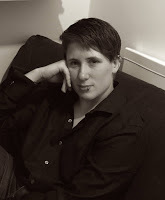 This week's guest author is Alys Earl who has given us a detailed inside into their process.
This week's guest author is Alys Earl who has given us a detailed inside into their process. AW Earl is a writer, storyteller, and performer whose fiction combines literary, genre, and folkloric motifs, and whose non-fiction involves them being quietly angry about transgender issues and the much misunderstood history of marriage. Living in Suffolk with various children and cats, they are currently seeking representation for a series of novels about modern day faeries in Norwich. Their debut novel, Time’s Fool, was published by Unbound in 2018, and their collection of illustrated ghost stories, Scars on Sound, was released in 2017.
(See their books below)
Do you do several drafts before you send your manuscript to the publisher for editing, or do you just send the first draft?
I always do several drafts before sending anything on to a publisher, whether I’ve been commissioned or not. I like to have a very clear idea in my head of what I’m doing, and how I want to achieve it before I’m ready to work with someone else on it. This is partly because my intentions tend to change a lot over the second and third draft, and I don’t want to mess my editors about by having something that goes off at a complete tangent to what we’d discussed, or what the first draft implied. Time’s Fool, for example, was originally conceived as a gothic romance - it was only by the third draft that I realised I could not force it in to that shape, and that it really found itself as something of a tragedy. It would have been impossible for an editor to do a fair job on what was pitched (romance) without turning it in to something quite other than the story it needed to be, and I needed the space to find that out for myself without wasting another professional’s time.
I am also, alas, something of a perfectionist and really don’t like people to see my work unless I’m already fairly satisfied with it.
How many times do you go back and forth (on average) - does it vary with the publisher or with the story?
With Unbound publisher, we had three lots of edits - the structural, the copy, and the line edits. I’m not sure how typical it was, but there was only one exchange at each stage - so, I received comments, worked on the suggestions, and then had my changes approved before the next stage. So, that was three times, and then a final proof read.
What kind of changes/suggestions do they make? are they just minor ones or are they major? (any examples?)
I’ve never been asked to make any seriously major changes to my work. In my experience, editors have been concerned with helping me draw out the story as I wanted to tell it, with an eye to the audience’s ease, enjoyment, and comprehension. This has involved moving some bits about, adding or deleting sections, getting rid of a few ‘darlings’ (I love a terrible pun - editors tend not to), or occasionally rewriting a scene or chapter so that it is more dynamic, or affecting. I’ve never been asked to change a character, or their motivations, only to make them clearer.
Similarly, copy editing is more focused upon honing narrative voice than controlling it - I tend to have quite a lyrical style, and a lot of the feedback was about helping that to ‘sing’. Copyeditors look for clarity, consistency, and - for want of a better word - elegance of voice, rather than any particular style.
Then, of course, there is accuracy. My books have a strong historical aspect, and editors are brilliant at catching, or questioning, historical points - and indeed, stopping authors from getting too carried away with including them. My editor for Time’s Fool caught some absolute howlers, as well as (thankfully) stopped me including an entirely unnecessary paragraph on the history of medieval beds.
Does it go through various stages, like developmental, copy editing and then proofing? Or is it straight into copy and proofing? Or again, does that vary on book and publisher?
In my experience, editing starts out with a sort of long-lens, looking at the structure and the narrative or the book, and gradually hones in to the content, then on the word choice, and finally the details like punctuation and spelling convention.
What would you say best practice is in regards to accepting/rejecting edits - is there always a discussion, or do you feel you have to accept all/some of them?
I try to keep in mind Neil Gaiman’s adage about editing: that if someone says there is a problem with a bit of your work, they are almost always right. If they try to tell you how to fix it, they are almost always wrong. Grumble as we might, editors know their jobs, and can see our manuscripts with clearer eyes than we can ourselves. As such, I tend to accept about 80-90% of small changes without question. Larger changes, I would often wish to discuss, or use as a starting point for implementing my own solutions, but in the vast majority of cases some level of editing is necessary or they wouldn’t have spotted it. Often shifting other bits around the contested section solves the problem just as well, or better, than their suggestion.
This approach almost certainly bores my editors rigid and no doubt comes off as very contrary, but as I said above, I’m a perfectionist. I am also, according to one editor I’ve worked with “terrifyingly workmanlike” about my stories. My structural editor for Time’s Fool spent a good few minutes reassuring me that it was a very decent manuscript, and the fact he’d marked it up so much didn’t mean I’d given him some dreadful scrawling that would need to be entirely rewritten. My attitude, though, was very much “Yes, but there are problems, or you wouldn’t have marked it up. So. How do I best go about fixing them?”
The only time this approach fails, I think, is when you and your editor have significant creative differences or outlooks upon life. When I was first starting to submit things, there was a little spate of stories about agents or editors asking (often marginalised) writers to change a character’s gender, race, or sexuality, - and that for me is a huge issue. Before handing your work to someone else to look at, it’s really important to know those things upon which you are not willing to compromise - the changes you will not make, not even if they are make or break changes as regards your contract, and for me questions of identity and morality feature very strongly in that. In addition to these, it’s worth having a list of things you would rather not alter, but could be persuaded upon. Everything else is up for discussion, for the service of the story, and the service of the reader.
The point I’m trying to make is, a good editor who understands your work would not have flagged something unless they genuinely felt there was a problem there. Do you really want this story to go out there with your name on it, if it has a problem that was pointed out to you, and you have done nothing to fix?
Do you find it hard to embrace the suggestions/changes given?
Yes of course I do! Writers are delicate, touchy creatures and anyone who pretends that they aren’t is lying. But, ultimately, it comes down to integrity.
The pact I make with my readers is that I’ve done everything in my power to make this story as good as it can be, and that involves listening to my editors unless their advice is about one of the things upon which I will not compromise. So, while I have a couple of friends I can vent to about all the things I’ve been asked to do to my novel in order to make it readable, I also just grit my teeth and do them.
Thank you so much for taking part.
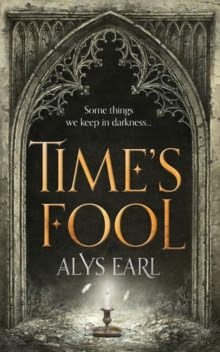
Autumn in the market City of Barchester, and two bright students begin their final year at University, content with old friendships, paying lip-service to old dreams. Until, that is, an ill-conceived prank introduces them to Julian.
For Sophia and Steven, the friendship they form with this worldly stranger marks a coming of age, a possibility to embrace the needs and longings they have never had the language to express. But Julian has his own secrets, and as the nights grow longer, it becomes clear that not all desires are without cost; that some things should never be brought into the light.
Time's Fool is a novel about monstrosity, about desire and communication. It's about the self we present to the world and the needs we whisper to ourselves in the darkness. It is about honesty and the fear of honesty. It is about the things we refuse - refuse to say, refuse to seek, refuse to believe - because sometimes, ignoring those things is all that keeps us sane.
Click on the book cover for the Amazon UK link. The Amazon US Link is HERE.
If UK based, you can buy the epub version on Hive UK HERE.
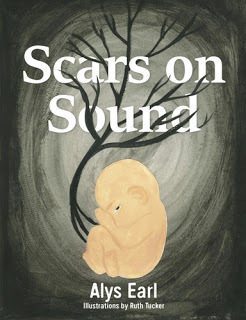
The past will hurt you if you turn your back on it. A village under the shadow of old magics. A book of poems that twists the minds of those who read it. A woman imprisoned by a poisonous love. Grown from the dark soil of the British Folk Tradition, these stories ring with a half-remembered music of loss, haunting and revenge. From the nurse recalling her monstrous charges, to the woman with scarred hands who is warped by a power from the past, these are tales of civilisation falling away, of something older and more dangerous coming through. With illustrations by Ruth Tucker, these lyrical, Gothic stories capture the horror that lies in the English landscape and the darkness of the human heart.
Click on the book cover for links to purchase from Lulu.
Guest Blog - Editing Process Q&A - Ayls Earl
 This week's guest author is Ayls Earl who has given us a detailed inside into their process.
This week's guest author is Ayls Earl who has given us a detailed inside into their process. AW Earl is a writer, storyteller, and performer whose fiction combines literary, genre, and folkloric motifs, and whose non-fiction involves them being quietly angry about transgender issues and the much misunderstood history of marriage. Living in Suffolk with various children and cats, they are currently seeking representation for a series of novels about modern day faeries in Norwich. Their debut novel, Time’s Fool, was published by Unbound in 2018, and their collection of illustrated ghost stories, Scars on Sound, was released in 2017.
(See their books below)
Do you do several drafts before you send your manuscript to the publisher for editing, or do you just send the first draft?
I always do several drafts before sending anything on to a publisher, whether I’ve been commissioned or not. I like to have a very clear idea in my head of what I’m doing, and how I want to achieve it before I’m ready to work with someone else on it. This is partly because my intentions tend to change a lot over the second and third draft, and I don’t want to mess my editors about by having something that goes off at a complete tangent to what we’d discussed, or what the first draft implied. Time’s Fool, for example, was originally conceived as a gothic romance - it was only by the third draft that I realised I could not force it in to that shape, and that it really found itself as something of a tragedy. It would have been impossible for an editor to do a fair job on what was pitched (romance) without turning it in to something quite other than the story it needed to be, and I needed the space to find that out for myself without wasting another professional’s time.
I am also, alas, something of a perfectionist and really don’t like people to see my work unless I’m already fairly satisfied with it.
How many times do you go back and forth (on average) - does it vary with the publisher or with the story?
With Unbound publisher, we had three lots of edits - the structural, the copy, and the line edits. I’m not sure how typical it was, but there was only one exchange at each stage - so, I received comments, worked on the suggestions, and then had my changes approved before the next stage. So, that was three times, and then a final proof read.
What kind of changes/suggestions do they make? are they just minor ones or are they major? (any examples?)
I’ve never been asked to make any seriously major changes to my work. In my experience, editors have been concerned with helping me draw out the story as I wanted to tell it, with an eye to the audience’s ease, enjoyment, and comprehension. This has involved moving some bits about, adding or deleting sections, getting rid of a few ‘darlings’ (I love a terrible pun - editors tend not to), or occasionally rewriting a scene or chapter so that it is more dynamic, or affecting. I’ve never been asked to change a character, or their motivations, only to make them clearer.
Similarly, copy editing is more focused upon honing narrative voice than controlling it - I tend to have quite a lyrical style, and a lot of the feedback was about helping that to ‘sing’. Copyeditors look for clarity, consistency, and - for want of a better word - elegance of voice, rather than any particular style.
Then, of course, there is accuracy. My books have a strong historical aspect, and editors are brilliant at catching, or questioning, historical points - and indeed, stopping authors from getting too carried away with including them. My editor for Time’s Fool caught some absolute howlers, as well as (thankfully) stopped me including an entirely unnecessary paragraph on the history of medieval beds.
Does it go through various stages, like developmental, copy editing and then proofing? Or is it straight into copy and proofing? Or again, does that vary on book and publisher?
In my experience, editing starts out with a sort of long-lens, looking at the structure and the narrative or the book, and gradually hones in to the content, then on the word choice, and finally the details like punctuation and spelling convention.
What would you say best practice is in regards to accepting/rejecting edits - is there always a discussion, or do you feel you have to accept all/some of them?
I try to keep in mind Neil Gaiman’s adage about editing: that if someone says there is a problem with a bit of your work, they are almost always right. If they try to tell you how to fix it, they are almost always wrong. Grumble as we might, editors know their jobs, and can see our manuscripts with clearer eyes than we can ourselves. As such, I tend to accept about 80-90% of small changes without question. Larger changes, I would often wish to discuss, or use as a starting point for implementing my own solutions, but in the vast majority of cases some level of editing is necessary or they wouldn’t have spotted it. Often shifting other bits around the contested section solves the problem just as well, or better, than their suggestion.
This approach almost certainly bores my editors rigid and no doubt comes off as very contrary, but as I said above, I’m a perfectionist. I am also, according to one editor I’ve worked with “terrifyingly workmanlike” about my stories. My structural editor for Time’s Fool spent a good few minutes reassuring me that it was a very decent manuscript, and the fact he’d marked it up so much didn’t mean I’d given him some dreadful scrawling that would need to be entirely rewritten. My attitude, though, was very much “Yes, but there are problems, or you wouldn’t have marked it up. So. How do I best go about fixing them?”
The only time this approach fails, I think, is when you and your editor have significant creative differences or outlooks upon life. When I was first starting to submit things, there was a little spate of stories about agents or editors asking (often marginalised) writers to change a character’s gender, race, or sexuality, - and that for me is a huge issue. Before handing your work to someone else to look at, it’s really important to know those things upon which you are not willing to compromise - the changes you will not make, not even if they are make or break changes as regards your contract, and for me questions of identity and morality feature very strongly in that. In addition to these, it’s worth having a list of things you would rather not alter, but could be persuaded upon. Everything else is up for discussion, for the service of the story, and the service of the reader.
The point I’m trying to make is, a good editor who understands your work would not have flagged something unless they genuinely felt there was a problem there. Do you really want this story to go out there with your name on it, if it has a problem that was pointed out to you, and you have done nothing to fix?
Do you find it hard to embrace the suggestions/changes given?
Yes of course I do! Writers are delicate, touchy creatures and anyone who pretends that they aren’t is lying. But, ultimately, it comes down to integrity.
The pact I make with my readers is that I’ve done everything in my power to make this story as good as it can be, and that involves listening to my editors unless their advice is about one of the things upon which I will not compromise. So, while I have a couple of friends I can vent to about all the things I’ve been asked to do to my novel in order to make it readable, I also just grit my teeth and do them.
Thank you so much for taking part.

Autumn in the market City of Barchester, and two bright students begin their final year at University, content with old friendships, paying lip-service to old dreams. Until, that is, an ill-conceived prank introduces them to Julian.
For Sophia and Steven, the friendship they form with this worldly stranger marks a coming of age, a possibility to embrace the needs and longings they have never had the language to express. But Julian has his own secrets, and as the nights grow longer, it becomes clear that not all desires are without cost; that some things should never be brought into the light.
Time's Fool is a novel about monstrosity, about desire and communication. It's about the self we present to the world and the needs we whisper to ourselves in the darkness. It is about honesty and the fear of honesty. It is about the things we refuse - refuse to say, refuse to seek, refuse to believe - because sometimes, ignoring those things is all that keeps us sane.
Click on the book cover for the Amazon UK link. The Amazon US Link is HERE.
If UK based, you can buy the epub version on Hive UK HERE.

The past will hurt you if you turn your back on it. A village under the shadow of old magics. A book of poems that twists the minds of those who read it. A woman imprisoned by a poisonous love. Grown from the dark soil of the British Folk Tradition, these stories ring with a half-remembered music of loss, haunting and revenge. From the nurse recalling her monstrous charges, to the woman with scarred hands who is warped by a power from the past, these are tales of civilisation falling away, of something older and more dangerous coming through. With illustrations by Ruth Tucker, these lyrical, Gothic stories capture the horror that lies in the English landscape and the darkness of the human heart.
Click on the book cover for links to purchase from Lulu.
November 25, 2020
Mid-Week Flash Challenge - Week 176
This week's picture prompt was created by Russian artist Ruslan Svobodin, and calls this Trigger the Cat. I rather love it.
I had used it in my new Tricky book, although I realised now I didn't encompass the gun, but still, the idea is to use the prompt in whatever way works for you. And it's also opened up a whole other sub plot! So very useful. Here's a snippet.
The General Guidelines can be found here.
How to create a clickable link in Blogger comments can be found on lasts week's post here.There is also a Facebook group for Mid-Week Flash, if you fancy getting the prompt there

Black Cat
Tricky’s new body meant that she wasn’t too puffed out by all the stairs that wound up to the top room in the tower. There were a couple of landings along the way leading off along corridors, but they contained nothing of interest to her. When she reached the top landing she faced the door which was open, and looked in. Lucien was at his desk, head down writing something. His birds were all there too, in all the alcoves and on all the window ledges, but none of them registered her presence.
She carefully stepped into the room. She didn’t plan to try and retrieve her Obsidian stone with him sitting there - didn’t think she actually could, as there wasn’t enough space between chair and cabinet. Plus she was confident he would sense the change in energy if she got that close to him, and she wasn’t going to risk it. She stepped inside the doorway, and stood to the left of it, in a corner where the circular outer wall met the inner wall, and waited.
Lucien was scribbling furiously, intent on whatever he had to tell. Then he laid his pen down and rolled the piece of paper up and made a strange squeaking noise with his lips, no doubt calling his birds to him. But it wasn’t a bird that came, it was a cat, and this one wore a strange device.
Now Tricky didn’t go in for all this ‘all witches must have cats’ malarkey. She wasn’t into them at all; they prowled about thinking they were something special, demanding attention and food when it suited them. Moody bloody things too, they were, and she didn’t care for that kind of attitude. She wasn’t going to chase after an animal that didn’t serve a purpose, although many would argue they did. Yes, they caught mice and other such small creatures, many that didn’t need catching, and they might spot the existence of ghosts and other energies, although it could just as easily be a fly, but she didn’t want cat hair getting into all her clothing and her food, she didn’t want it in her garden shitting up the place, and she didn’t want half rotting ‘presents’ turning up on her doorstep. Oh no, they weren’t for Tricky. But it didn’t surprise her Lucien had one. He was that sort. He didn’t just go in for the magic or the power; he went in for the image too. And though birds might be his forte, cats gave him the look he was after. And this was a black cat of course. No other would do.
She found it interesting the cat paid no mind to the birds - although they were big birds and would stab that cat soon as look at it. And she was surprised it tolerated wearing a contraption. He clearly had a hold over it. It seemed birds weren’t just his thing.
The cat jumped up onto his desk and sat in front of him, offering its back. The contraption, affixed round the front legs and underbelly, was a tube which Dufray popped the letter into. He then made some other strange noises and the cat hopped down and went out of the door, off to deliver Lucien’s missive. Tricky wondered where it was going.
Then Lucien stood up and took his thigh-length black jacket off the back of the chair and put it on. Buttoning it up, he moved over to the wall and preened himself in a mirror. One of the birds screeched, startling Tricky. Lucien said aloud, ‘Don’t worry, I won’t be long, and you can join me if you like, eh?’ He turned and looked at the Jay that had made the noise and offered an arm. It glided down and perched on his forearm and together they left the room.
November 24, 2020
Guest Blog - Editing Process Q&A - Akshita Nanda
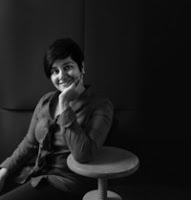 The next Guest Author is Akshita Nanda, a Singapore based author, with some interesting experience to share.
The next Guest Author is Akshita Nanda, a Singapore based author, with some interesting experience to share. Bio:
Akshita Nanda's first novel, Nimita's Place was shortlisted for the 2017 Epigram Books Fiction Prize for unpublished manuscripts, and the 2019 Singapore Book Awards for best literary work. It was adapted into a staged reading for TheatreWorks in 2019. Her second novel, Beauty Queens Of Bishan is published by Penguin Randomhouse SEA. She has worked as a lab researcher, as an educator and for 12 years as a journalist and critic for The Straits Times. She is currently studying at the Lee Kuan Yew School of Public Policy in Singapore.
Books reerenced in this Q&A:
I've had 2 novels published: Nimita's Place (Epigram Books, 2018) co-won the Singapore Literature Prize for English fiction in 2020 and was shortlisted for the Singapore Book Awards 2019. It has also been adapted into a theatrical reading.
The second is Beauty Queens of Bishan (Penguin Randomhouse SEA, 2019)
I've also created an interactive online story for readers aged 9-14, commissioned by the National Arts Council of Singapore, with publisher Tusitala Books. It's online here till Nov 29.
All three works went through some form of editing.
Do you send a proposal before a book is accepted? Do you send in an outline first and get that okayed or do you go straight to the full draft?
Both my novels were written before publishers were found for them. I'm currently working on a third, without a publishing contract.
I'm represented by the Jacaranda Literary Agency. I do speak with my agent, Jayapriya Vasudevan, while developing the elevator pitch, but she has the difficult task of representing books that I want to write, rather than getting me to write what a publisher wants.
The interactive online story was the first one where I sent a pitch in for approval but I was given carte blanche with the narrative and plot. The publisher Tusitala Books did explain what media sources and tools they were using, which helped me shape my story outline and not ask for features they couldn't include with the story.
Do you do several drafts before you send it to the publisher for editing, or do you just send the first draft?
Several drafts. I hand-write all my first drafts. Typing them into the computer is the second draft.
I edit several times and then give the edited version to at least 3 friends I trust deeply. I've also paid for professional editing, via someone my agent recommended.
Once all the feedback is in, I collate it and decide what needs to be changed. Only then does my agent receive a submission copy to show to publishers.
How many times do you go back and forth (on average) - does it vary with the publisher or with the story? Does it go through various stages, like developmental, copy editing and then proofing? Or is it straight into copy and proofing? Or again, does that vary on book and publisher?
There's usually a structural edit, where an editor goes through the course of the story and suggests what should or should not be changed.
With the second novel, this involved me writing an extra chapter for earlier development of a minor character.
After the structural edit comes the line edit, where one or more editors go through the novel line by line and suggest changes or ask questions.
There’s usually at least two rounds of editing - including with the online story - before the text is sent to layout. After layout, I proofread the galleys before they are sent to print.
What kind of changes/suggestions do they make? Are they just minor ones or are they major? (any examples?)
Examples of changes include the extra chapter for book 2. With the first novel, I wrote it to alternate between past and present. The editorial team thought it would be better to have several chapters from one timeline put together, rather than alternating timelines between every other chapter. At first I was resistant but it did work better for readers and didn’t involve me rewriting anything, which was great.
Both my books have been edited by at least one person unfamiliar with the culture being represented in the story. That’s led to some interesting dialogue about differing cultural assumptions. No editor has forced me to make changes I didn’t eventually want to make. All were respectful of what I was trying to achieve.
What would you say best practice is in regards to accepting/rejecting edits - is there always a discussion, or do you feel you have to accept all/some of them? Do you find it hard to embrace the suggestions/changes given?
There is always a discussion. Both editor and writer will need to make clear to the other why changes are considered necessary. If a writer can defend their rationale, editors tend to accept it.
If an editor can defend their rationale, writers tend to accept it.
I have had 17 years in the publishing industry, including 6 as an editor of books and 12 as a correspondent for a newspaper, so I am aware that writing IS a team effort and that there are many hands and eyes shepherding copy to print. I know that often I am too close to the text to be objective - and also that in the end, my name is on the book. I know what hills to die on and what changes to accept gracefully.
Thanks you so much for taking part.
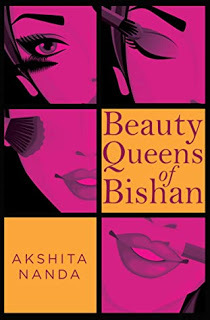
A light-hearted story, Beauty Queens of Bishan centers around stereotypical rich Indian families in Singapore, yet it does not leave out other parts of the community and how they all come together in the beauty parlours of the average-class heartland of Bishan. In Bishan, the busiest suburb of Singapore, thirteen small beauty parlours co-exist quietly, offering haircuts, bikini waxes and facials at no-nonsense prices. All that changes when a swanky new salon opens. D’Asthetique (Beauty is Skin Deep) is run by April Chua, the stylist to the stars. April’s plan for Bishan includes controlling her competitors through a new society, NAILSO (Neighbourhood Alliance of Independent Lifestyle Service Operators). The only person who dares to protest is the chubby Gurpreet Kaur, owner of Monty Beauty Spa. Both have clients in the upcoming Grand Glam Singapore Beauty contest. Will April’s shoe-in Candy Kang prove yet again why she is Singapore’s sweetheart? Or will Gurpreet’s client, Tara Chopra, prove a star on stage as well as in court?
November 19, 2020
Guest Blog - Editing Process Q&A - Dale S Rogers
 Our next Guest author is Dale S Rogers, author of Christian Romantic Suspense and Children's book. She's had an interesting journey on with her editing experience with publishers.
Our next Guest author is Dale S Rogers, author of Christian Romantic Suspense and Children's book. She's had an interesting journey on with her editing experience with publishers. A South Carolina native, Dale currently lives in North Carolina with her husband and three cats. With several family members involved in writing,
A debut novel filled with suspense as Photojournalist Andra seeks to clear an innocent person’s name and find evidence against a wealthy adversary. But she isn't isn’t expecting the biggest twist of all... falling in love.
When Andra goes to the British Virgin Island of Tortola on a magazine assignment, she never expects to become involved with a tour guide bent on revenge. Pulled into his world of intrigue, she must learn who she can and cannot trust while striving to prove the truth concerning the Ahoskie Diamond Necklace.
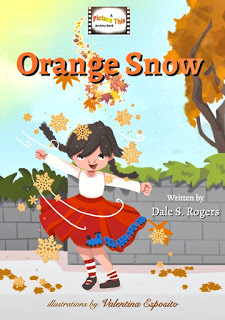
Lucy likes to imagine things. That's what she was doing one windy autumn day, waiting for Mom to pick her up from school. She was thinking how wonderful it would be if snow were... orange! And how fun it would be to play in. Just for pretend. But do you ever wish pretend could be real?



